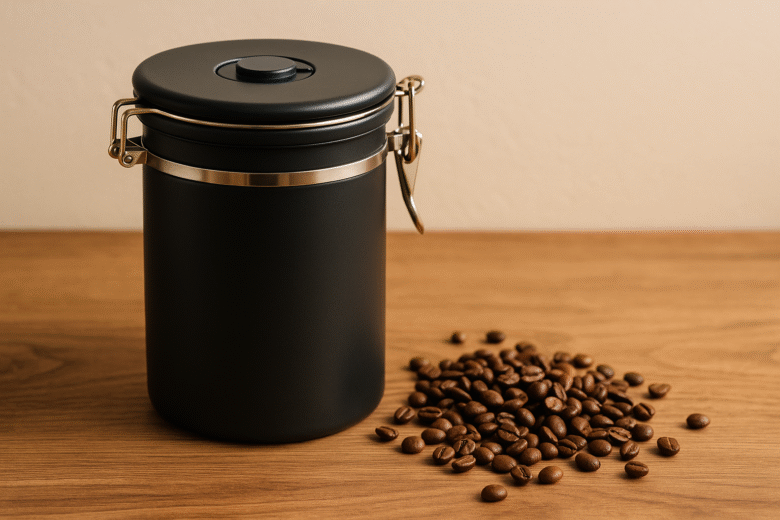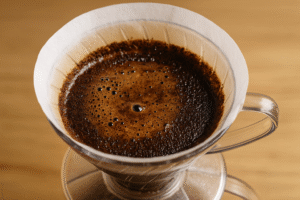You’ve found your favorite beans, nailed your brewing method, and maybe even invested in a great grinder.
But if your coffee still tastes dull after a few days, the problem might be hiding in your storage habits. Coffee, like any natural product, is fragile. Once roasted, it begins to degrade—losing its aroma, flavor, and balance over time.
The good news? With just a few adjustments, you can extend the life of your beans, preserve their freshness, and protect every cup you brew.
This complete guide will show you how to store coffee beans the right way—what to avoid, what to use, and how to keep your coffee tasting vibrant for longer.
Why Coffee Beans Lose Freshness
Coffee beans begin to age the moment they’re roasted. Four major enemies speed up this decline:
Oxygen
Causes oxidation, breaking down flavor compounds and essential oils.
Moisture
Creates clumping and promotes spoilage, especially in ground coffee.
Light
Triggers photodegradation, muting brightness and clarity in flavor.
Heat
Accelerates chemical breakdown, shortening shelf life even faster.
Together, these elements degrade coffee beans within days if left unprotected.
How Long Does Coffee Stay Fresh?
Whole beans stay fresh for 2 to 4 weeks after roasting if stored correctly. Ground coffee has a much shorter life—just 3 to 7 days before it noticeably declines.
Espresso and light-roast beans may lose their punch faster, while dark roasts can feel stale in texture but still hold strong flavor longer.
Use a roast date as a freshness guide—not the “best by” date, which is usually overly generous.
Best Practices for Storing Coffee Beans
Use Airtight Containers
Oxygen is the biggest culprit. Always store your beans in a sealed, airtight container—preferably with a one-way valve to let CO₂ out without letting oxygen in.
Avoid Transparent Jars
Light breaks down delicate aromatics. If using glass, keep it in a dark place. Opaque containers are ideal.
Keep Away from Heat and Humidity
Store coffee at room temperature in a cool, dry cabinet or pantry—never on top of your espresso machine or near the stove.
Use the Right Size Container
Use a container that matches your bean quantity. Less air space = less oxidation.
Don’t Open Bags Too Often
If you’re working through a large bag, divide it into smaller jars. Each time you open a container, you introduce oxygen.
Pre-Portion If Necessary
To avoid daily exposure, divide into weekly portions and only open one at a time.
Should You Store Coffee in the Fridge?
No. Fridges introduce two major risks:
Condensation
When cold beans hit warmer air, moisture forms on the surface—damaging flavor and encouraging mold.
Odor Absorption
Coffee is highly porous and absorbs surrounding smells easily—like onions, cheese, or leftover pizza.
Even in airtight containers, fridge storage is not recommended unless you’re in a humid climate without air conditioning.
What About the Freezer?
Freezing can be useful, but only if done correctly:
Use vacuum-sealed or airtight bags
Divide into small portions before freezing
Don’t open and refreeze—moisture will form
Best practice: freeze unopened bags and use within two months. Once thawed, treat the beans like fresh and store them at room temperature.
Only freeze beans you won’t use for several weeks. Daily-use coffee is best stored at room temp.
Best Containers for Coffee Storage
Vacuum-Sealed Canisters
Expel oxygen with a built-in pump or one-way valve. Best for long-term storage.
Opaque Glass or Ceramic Jars
Stylish and protective—great for countertops if kept away from heat and light.
Stainless Steel Coffee Vaults
Durable and usually come with CO₂ valves. Often preferred by professionals.
Zip Bags with One-Way Valve
Most roasters ship beans this way. Good for short-term storage if sealed tightly after each use.
Not recommended:
Mason jars
Plastic bags
Unsealed bins
Original paper packaging
Does the Grind Affect Freshness?
Yes—dramatically. Ground coffee loses flavor much faster due to increased surface area.
If you buy pre-ground coffee:
Use within 3–5 days of opening
Store in a very tight container
Consider refrigerating only if your kitchen is very hot and humid (and even then, only for short-term use)
Best option: grind fresh before every brew.
How to Tell If Coffee Has Gone Stale
Your coffee might be stale if you notice:
Lack of aroma
Stale coffee smells flat or woody instead of sweet and fragrant.
Muddy or hollow flavor
You’ll taste dryness, lack of acidity, and dullness.
Poor bloom
Fresh coffee “blooms” (bubbles up) when first wet. Older coffee won’t.
Oily surface on older beans
Especially in dark roasts—this suggests oxidation has already occurred.
Bitter finish
Not caused by roast level—just degraded compounds creating harsh aftertaste.
If you’re unsure, brew a fresh batch with recently roasted beans and compare.
How to Maximize Coffee Freshness
Buy only what you’ll use in 2–3 weeks
Choose smaller bags if you brew occasionally. Don’t stockpile unless you’re freezing.
Always check the roast date
Not all bags show it, but favor those that do. Fresher = better.
Preheat your storage container
If using glass, warm it with hot water and dry completely. This avoids condensation when adding beans.
Use desiccant packs for moisture control
Especially helpful in humid climates—place inside the container (but not directly touching beans).
Invest in a quality grinder
Since freshness declines rapidly after grinding, owning a burr grinder makes a huge difference.
Keep a rotation schedule
Label containers with opening dates and track usage. Consume older beans first.
Frequently Asked Questions (FAQs)
Can I store beans in the coffee grinder hopper?
Not ideal. It exposes beans to light, air, and heat from the motor. Keep only what you’ll use immediately.
What’s the best place to keep my coffee container?
A dark, dry cupboard away from heat sources. Avoid the fridge, windowsill, or microwave top.
Can I use vacuum-sealing bags for long-term storage?
Yes. If you plan to freeze beans, vacuum sealing is one of the best methods to lock in freshness.
How do I store flavored coffee?
Flavored coffee degrades faster and tends to smell artificial over time. Use airtight containers and finish within 10 days.
Does whole bean coffee age better than ground?
Yes. Whole beans stay fresh 3–5 times longer than ground coffee when stored properly.
Can I drink coffee that’s several months old?
It won’t make you sick, but it likely won’t taste good. Expect flat aroma and a bitter finish. Use it for baking or cold brew.
Is it okay to leave beans in the original bag?
If the bag has a one-way valve and can be resealed tightly, yes—but only for short-term use.
Final Thoughts – Freshness in Every Sip
Storing your coffee properly isn’t complicated—but it makes a massive difference. You don’t need fancy equipment, just the right container, a cool spot in your kitchen, and a little consistency.
Coffee is at its best when it’s fresh. Preserving that freshness keeps the flavors alive—from the bright notes of an Ethiopian roast to the deep cocoa tones of a Brazilian blend.
If you’ve invested in quality beans, don’t let them fade before they shine. Seal them, store them, and brew them right.
Because a great cup of coffee doesn’t just start with the beans—it starts with how you protect them.

Marcio Luzardo is a coffee enthusiast and the voice behind Tudo Viraliza. With a passion for turning curiosity into practical knowledge, he shares easy-to-follow tips, guides, and insights to help readers enjoy better coffee every day. When he’s not writing, Marcio is exploring new brewing methods or diving into the rich stories that connect coffee to culture, lifestyle, and wellness.



